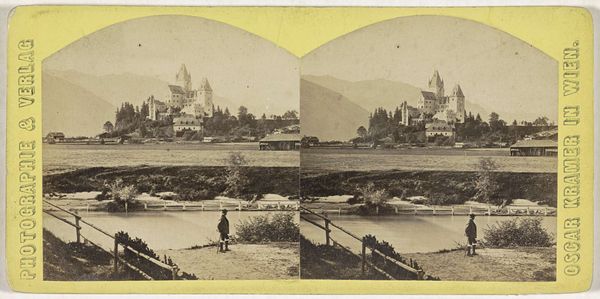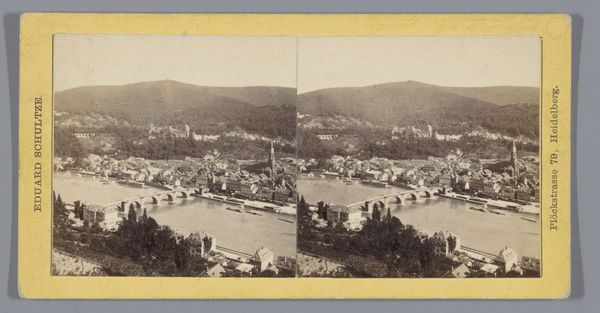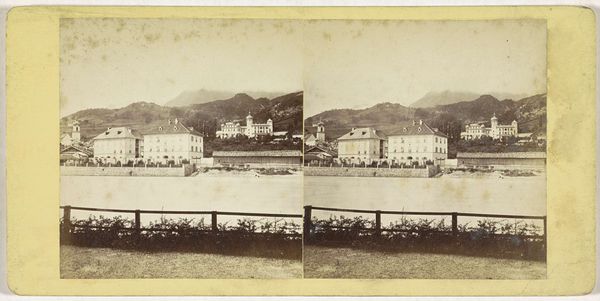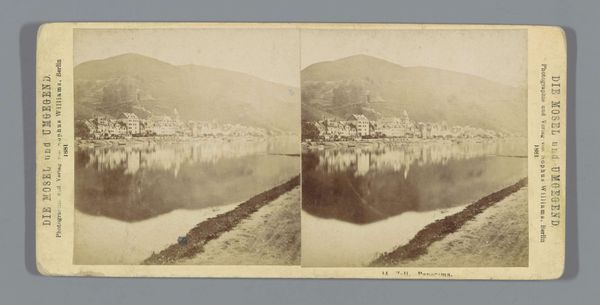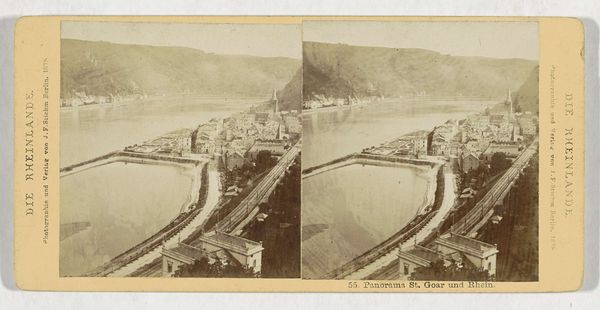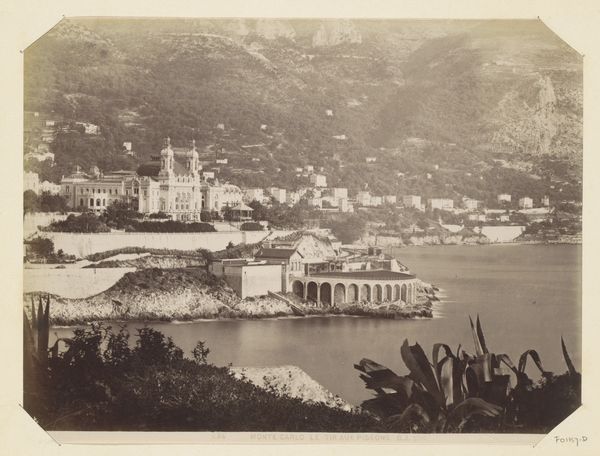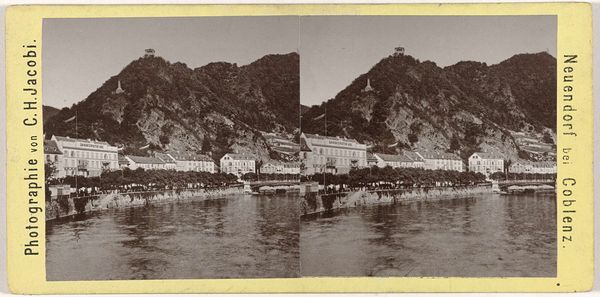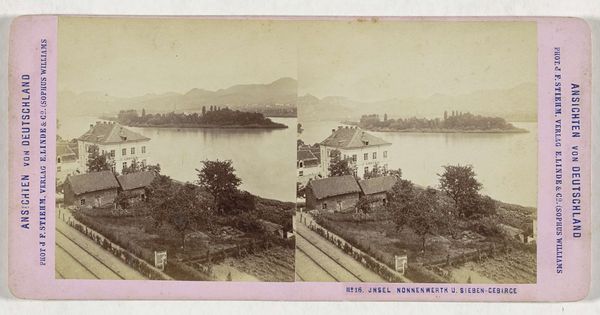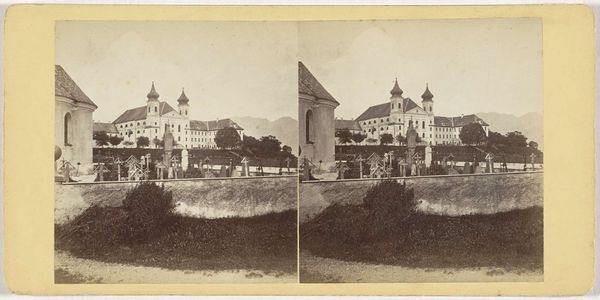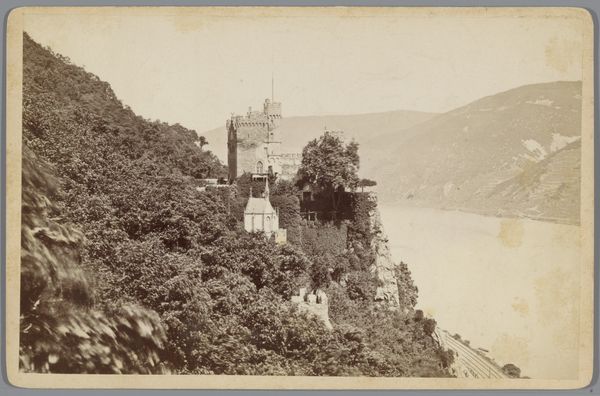
print, photography
#
16_19th-century
# print
#
landscape
#
photography
#
cityscape
Dimensions: 8.1 × 7.6 cm (each image); 8.7 × 17.8 cm (card)
Copyright: Public Domain
Editor: Here we have an anonymous print from the 1860s, titled "Untitled (Boppard)," currently residing at The Art Institute of Chicago. It is a photographic cityscape. The mirrored composition has an old, serene quality. What do you see when you look at this work? Curator: From a formalist perspective, I am drawn to the interplay of light and shadow, particularly the way it defines the architectural forms along the riverbank. Notice the textured surface of the water, achieved through the photographic process. The twin images side by side invite close scrutiny and consideration. How does the repetition affect your understanding of the photograph's content? Editor: The double image gives it a depth, almost like a 3-D effect when you focus on corresponding elements of each panel. But I find myself scanning the photograph as two separate but very similar works, comparing the tones. The twin effect also distances me as the viewer; this is an artistic rendering of the town and not the actual Boppard. What do you think about the subdued coloration? Curator: The sepia tone, while characteristic of the period, also serves a formal purpose. It unifies the various elements, reducing the distractions of varied color and allowing the viewer to focus on form, texture, and composition. Also observe that there are few tonal variances, from the pale sky and light river water in comparison to the dark, massive buildings. Note the delicate details within those constraints! What elements of its composition do you find most compelling? Editor: I see now that you mean the details within the towers or buildings! I initially didn’t even focus on that. Thanks so much, Professor! Curator: Of course! A focus on form unlocks so many interpretations, doesn’t it?
Comments
No comments
Be the first to comment and join the conversation on the ultimate creative platform.

